
Hello everyone! My name is Yunji Jung (Little Gold), I live in Seoul, Korea.
I’m a 3D artist ready to jump into what I love. Sometimes I participate in game environment design, but mostly I do character modeling. Currently, I’m working as a character modeler in the game industry which I’ve always dreamed of becoming since I was a kid.
Having worked in the game industry for several years, I realized that 3D technology was evolving daily and that easy-to-use tools are rapidly entering the market.
Fortunately, I am a person who likes to explore new things. I often just scratch the surface of various tools featured on YouTube in my free time. Among them, I found Character Creator (CC) lets me work intuitively and efficiently without complicated tutorials, so I often use the tool for my work.
Part I. Winner Entry Workflow
Step 1. Finding Reference

It takes a lot of time to find references for me. It’s a very important process to gather references before starting work. Before I start working, I specifically design who my character will look like and which celebrity my character’s outfit should be inspired by.
For heads, look for references where you can find features such as front, side, 45 degrees, top, and bottom, if necessary. Next, we will decide on the material and overall feeling given by the costume. In this case, K-pop idols gave me a lot of inspiration. And Like many workers, I mainly use the PureRef program.
Step 2. Editing 3D Face and Body
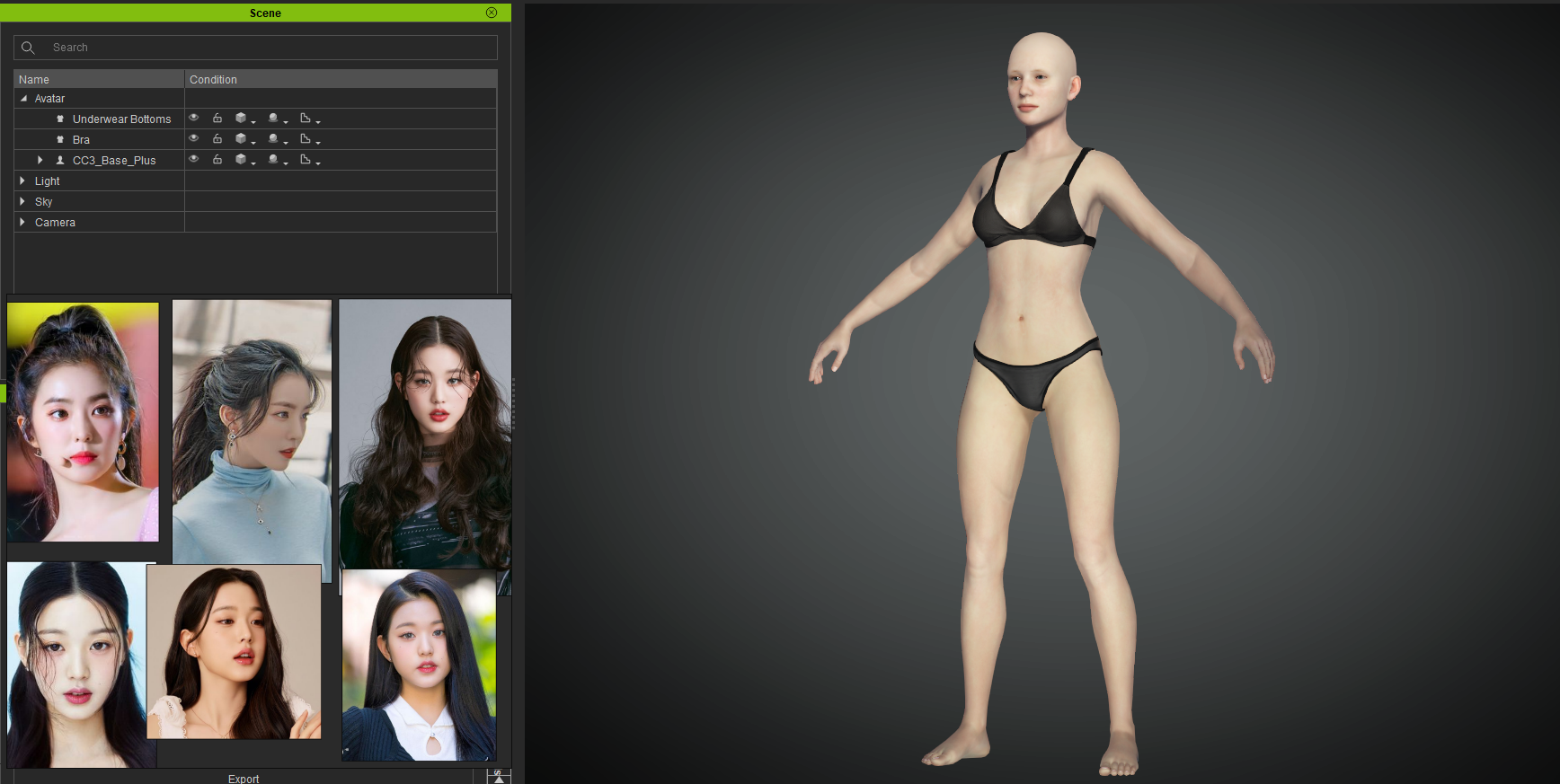
Basically, I used the body provided by CC3 as the base.

Let’s start with the head. CC3 is very convenient because you can intuitively modify the shape of the 3D face. In particular, it is possible to manually control the deformation as you like while connecting to ZBrush with GoZ. In my case, I purchased an additional Headshot plug-in and used it, which enables more sophisticated control of the head.

Step 3. Head Corrections, Adding Hair & Dress

Modify the head more precisely. Then, before making a character pose, apply CC3’s stock hair and dress to get a feel of the character.
Step 4. Making a Character Pose

I made a character pose after putting on my hair and dress. The reason is that the body may look different when the character wears a costume and when it doesn’t, so it is to make additional modifications to the body to the look that you want when they’re dressed.
Step 5. Cloth Modeling

Now let’s make a costume. After positioning the character in CC, import the edited body into Marvelous Designer. The overall silhouette and wrinkle directions are determined in Marvelous Designer (MD).
Step 6. Adding Details in ZBrush
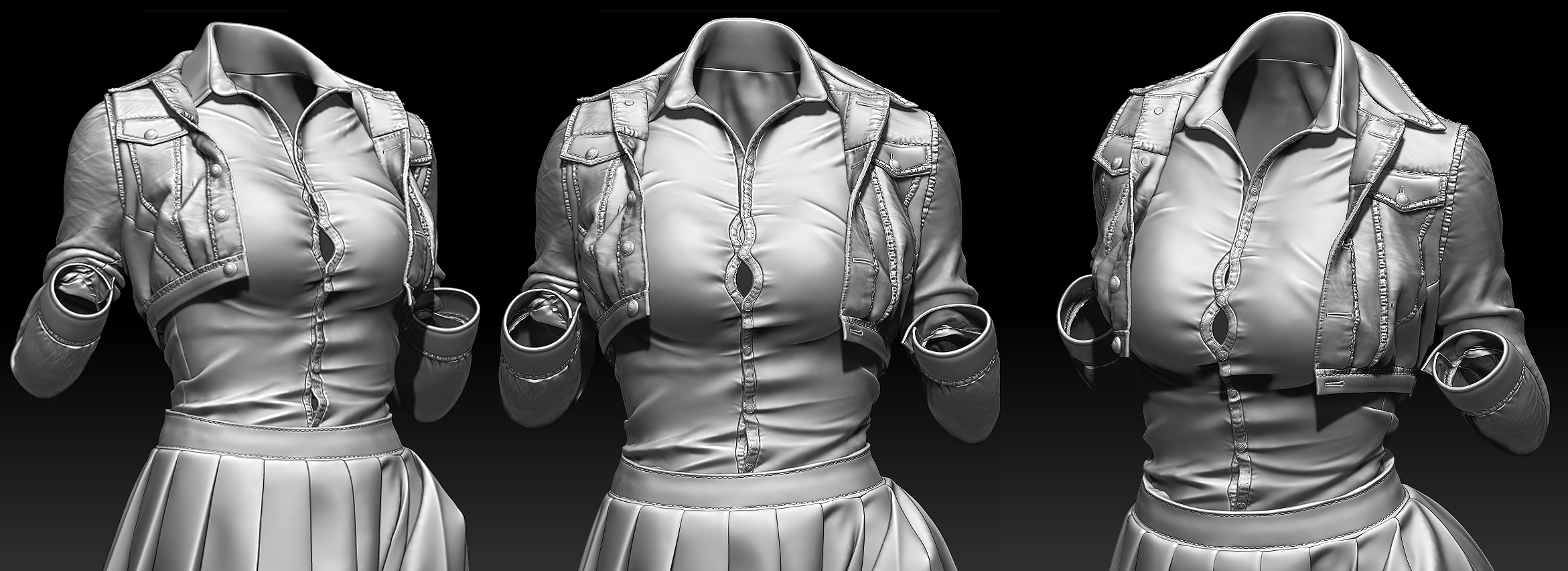
Add a bit more deformations, textures, and stitching in Zbrush. Use the large silhouette exactly as it was taken from the MD, but fully express the details in ZBrush that MD can’t. I added the hemlines, fine wrinkles, stitches, and fabric textures.
Step 7. Render To Texture (RTT) and Texturing

It’s not for in-game at this time, so I didn’t put a lot of effort into the topology. Also, I finished a certain amount of low poly and UV mapping for texture work. The next step is to texture the costume using Substance 3D Painter.
Step 8. Facial Expressions & Makeup

Lastly, add an expression and edit the makeup to look like a K-pop idol with Photoshop.

Step 9. Final Polish

After the competition ended, I made additional improvements to the quality of the parts that seemed to be lacking. I edited the makeup and a little bit of the head as well as added hair and accessories to improve the overall quality.
Thank you so much!
Part II. Feature story
Q : Hi Yunji, many thanks for sharing your workflow with us. Your entry ‘A Lovely Girl’ has a very stunning character and costume design. Whether this girl is tying her bow or eating an apple, you’re good at catching delicate moments to show the character’s aesthetics.
Could you share more of your artistic thoughts behind this project? How do you decide the best angles to demonstrate a character’s unique personality?
I’ve been eager to make a pretty girl character all the time. While participating in this “A Lovely Girl” project, I realized that making a beautiful character is not as easy as I thought. However, making a pretty character is a common request in my industry, so I will continue to work on it. It was my test of whether I could complete a character of desirable qualities in two months’ time from concept to modeling and rendering.
Planning of the beauty shot and overall feel of the piece is about eighty percent complete at the beginning stages. The variety of clothing materials, hairstyles, poses, and facial expressions begin with a dummy. I find a lot of references and keep trying out dummies until the look I like comes out. CC provides a function that makes it easy to change character poses and facial expressions; it is beneficial in reducing working time.

Q : You’ve mentioned how you’ve dreamed of working in the game industry since childhood; what was the trigger for such ambition?
I have liked drawing since elementary school. Of the various fields under consideration, Game Art was a very attractive option. I liked to play games and I thought seeing the game artwork was really cool.
Because I didn’t recognize the difference between 2D and 3D at the time, I used to save the illustrations I wanted to draw on my hard drive or buy a collection of illustrations and draw along. Naturally, I majored in a related field and 3D from the age of 19. Currently, I am honored to have the opportunity to work with the artists of the illustrations I used to copy.
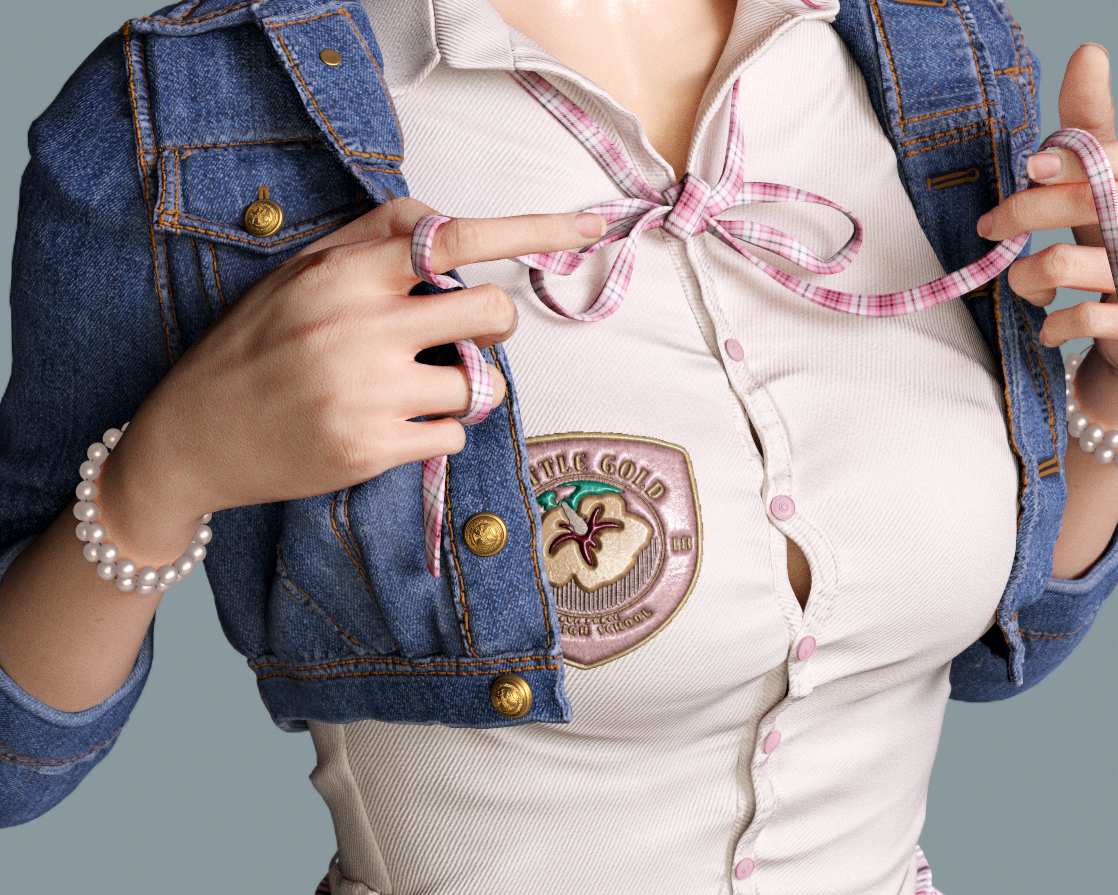
What are the most rewarding aspects in this line of work? What are the challenges of being a character modeler in the Korean game industry?
Character modeling is too difficult: face, hair, dress, monster, hard surface, nothing is simple. But it is also more rewarding because it is not easy. New concepts always excite me and I’m very happy when I get some satisfactory results. Being a 3D artist is an irreplaceable and attractive role.
The Korean game industry is always mindful of globalization. As a game developer and modeler, the challenge is to think about how to express more realism. For realistic expressions, Korean game companies are willing to invest in increasing their development capabilities by using next-generation engines and 3D scans, etc.

Do you think it’s beneficial to be a trilingual speaker (Korean, English, and Chinese) in the game industry in Seoul? How does this multi-cultural background influence your 3D character creation?
It must be great to be able to speak three languages. However, most of my colleagues are Korean, so there are few opportunities to use various languages in person. Nevertheless, the ability to understand without subtitles seems not very useless because most of the tutorials in the new tools are in English, and if there is a problem, it is also convenient to be able to contact by email directly without using an interpreter.
In addition, most artists on YouTube use English. Because they are like my teacher, sometimes I feel strange and happy to understand their language. Furthermore, I can expect more opportunities in the future in this global world. 😀

Q : Sometimes you also need to participate in environment design for the game. We all know working in the game industry demands huge amounts of time and effort to deliver high-quality pieces.
How do you learn new techniques apart from your busy day job?
Before I start my day, I research and purchase sample files or pin new inspirational works and articles in the morning. I use the data that I’ve piled up when I need to. This routine is actually very helpful when working.
I look for technical deficiencies whenever necessary. Usually, I ask my colleagues or look for overseas articles and YouTube for things I don’t know. There are many ways to work inefficiently in the sea of information, but you should be able to see and choose carefully. Otherwise, I look through the thumbnails of YouTubers artists and click on the videos I am interested in.

Q : How did you know about Character Creator? In your experience, what are the merits and shortcomings of using CC to design 3D characters?
At first, I think I saw an advertisement on the ArtStation. I was wondering if I could fix the shape of the head intuitively like it was advertised, so I downloaded it and used the trial version. The tool was simpler and easier to learn than I thought, especially in that I could use the GoZ function to replace the base I wanted for the basic model itself, and I used the function effectively in the project: “A Lovely Girl”.
Q : “Indian Girl In Saree” looks very photorealistic while “A Lovely Girl” has some CG stylization. How did you achieve different results by using Character Creator, Marmoset Toolbag, ZBrush and 3ds Max?

As mentioned earlier, I aim to make a pretty woman; and both works have this same purpose. The photo-like look as a “due diligence” is fun to make personally, but it is also a model that would not be received well in the game market. Perhaps my goal is to mix the two.
If you look at K-pop idols these days, there are artists who look as unreal as game characters. I want to make a character that expresses details realistically but gives a cool and pretty feel. To do so, I have to look at a lot of material and study it all—I will continue to learn and study what I lack.

Q : Could you share three things that inspire you the most when you start a new project?
What inspires me the most are the K-pop idols these days. Sometimes I am ecstatic when I see artists who are prettier than 3D characters. Or I try to see a lot of well-taken pictures and well-drawn pictures. Because I think it is important to keep my eyes open to new material. In the same vein, I consciously watch sci-fi dramas on Netflix in my free time.

Learn more :
• Yunji Jung (Little Gold) on ArtStation https://www.artstation.com/summerjung
• Yunji Jung (Little Gold) on Instagram https://www.instagram.com/littlegold_jung/
• Character Creator https://www.reallusion.com/character-creator/download.html
• Reallusion https://www.reallusion.com/
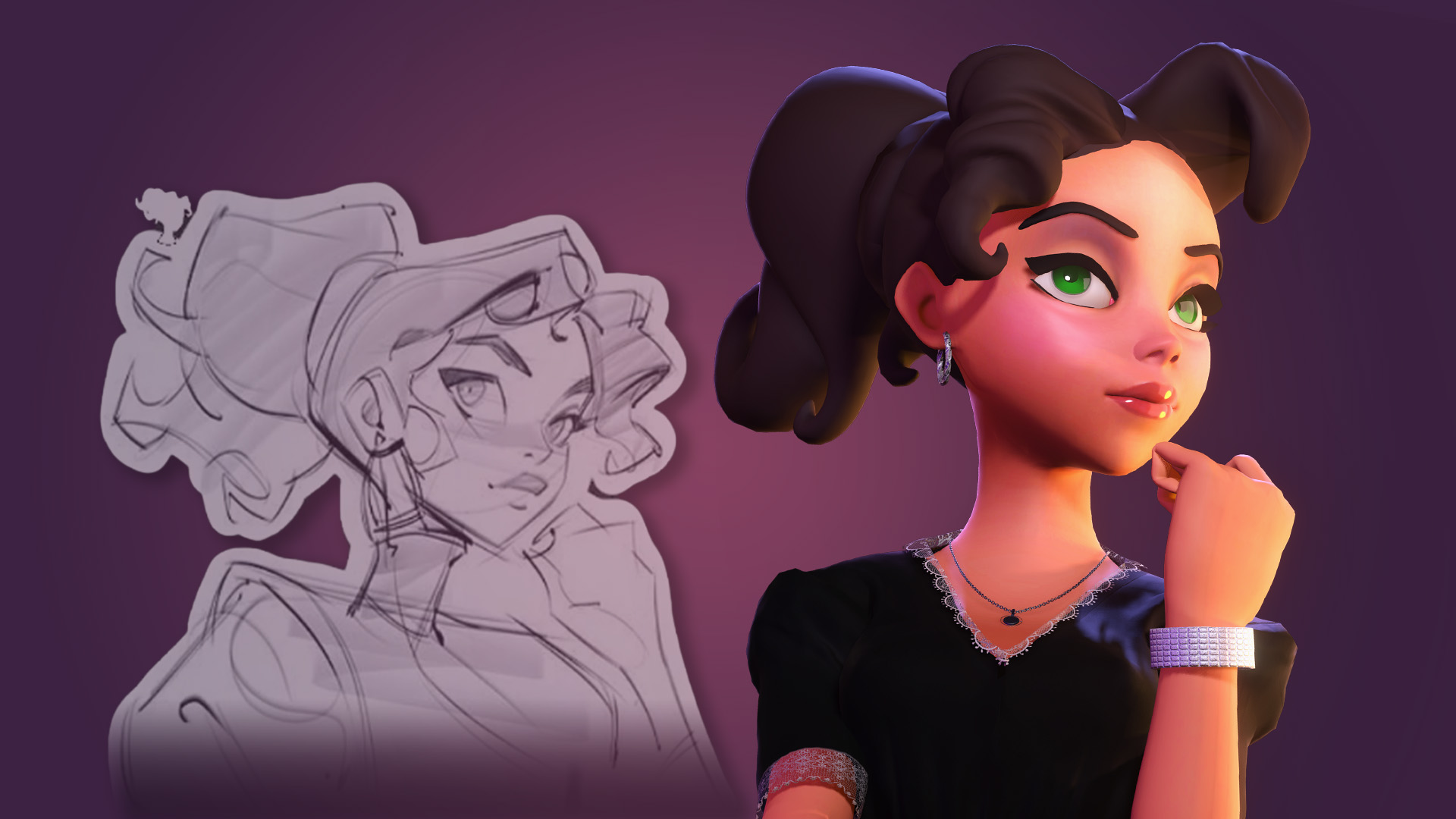
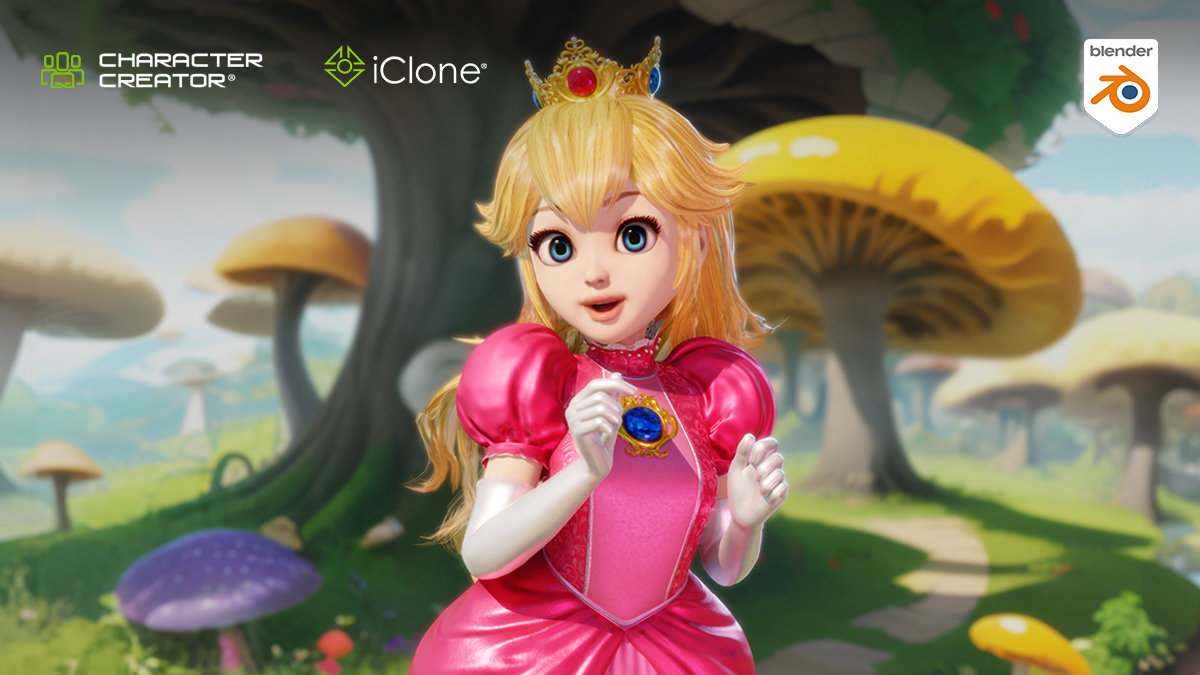


1 comment
Just one word: AMAZING!